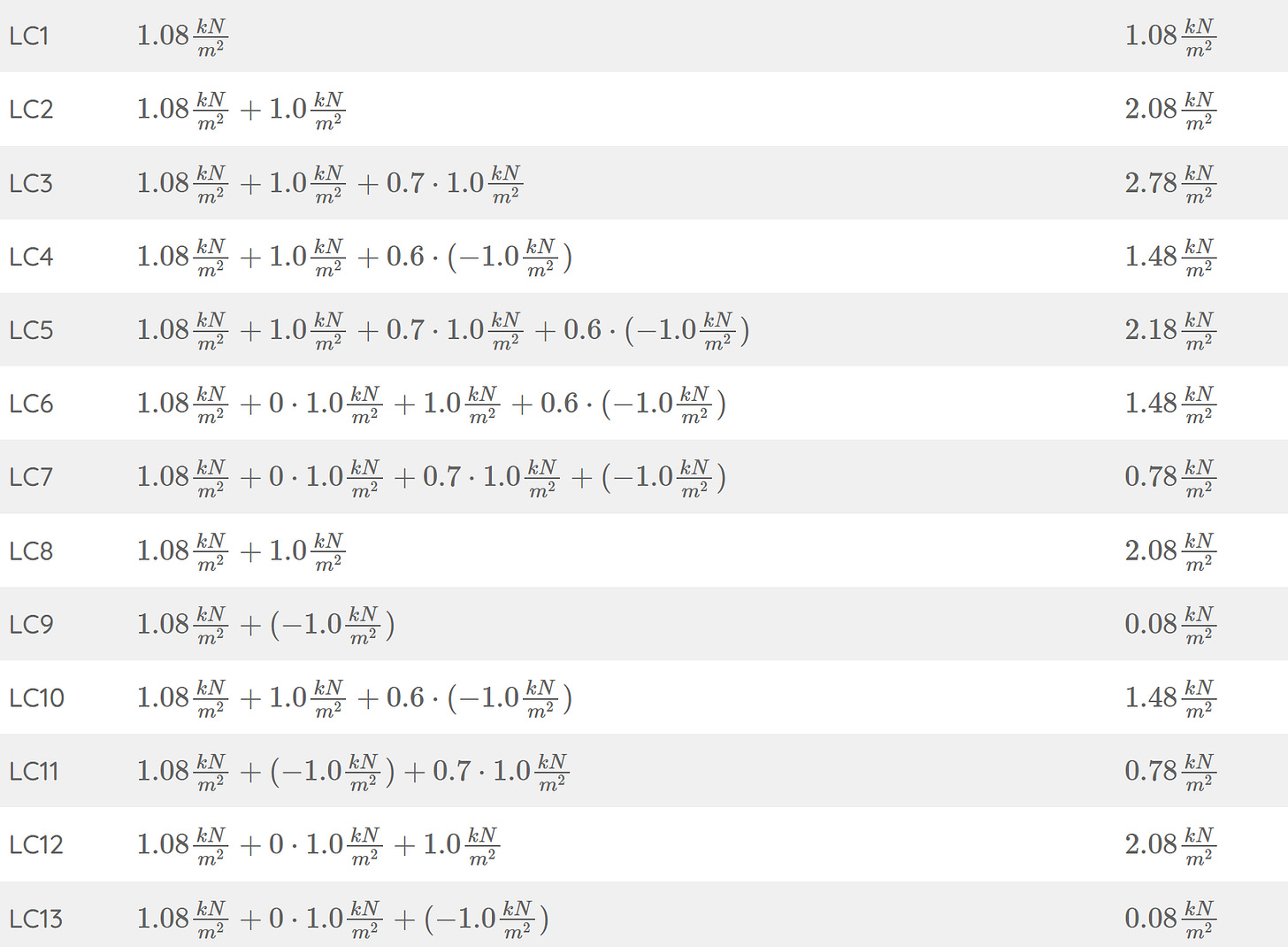Load Combinations Part 2 - SLS Actions
#13th episode of the Structural Loads Series
Hello friends, 👋👋
Today we’ll tackle the 2nd part of the load combinations guide - serviceability or SLS load combinations. Last week, we covered ULS, accidental and seismic load combinations. If you missed that article, then you can check it out → here ←.
In today’s article, you’ll learn how to set up SLS characteristic, quasi-permanent and frequent load combinations according to EN 1990, so you know with what loads you need to verify for example the deflection and cracking of a rc concrete beam.
8 Must-Have Softwares For Structural Engineers
Scroll down, if you are only interested in SLS load combinations.
It’s crazy to me how much technology has advanced in the last 10-20.
I was born in 1997, and I got my first smartphone at the age of 13. I wasn’t raised with a tablet or smartphone as a baby, but instead I grew up when all these new technologies came out. I am glad it was that way because I know both worlds.
I am among the youngest generation of structural engineers which grew up with software, but a lot of my older colleagues don’t use the latest software in their engineering projects or use paper and pen. This is absolutely understandable, as adapting is difficult. But this also slows them down in some tasks.
So here are my must-have software tools structural engineers should use in 2024.
Now, back to SLS load combinations…
Load Combinations According To Eurocode (Part 2 - SLS)
As already mentioned, SLS stands for → serviceability limit states ← and there are 3 actions structural elements might need to be verified for: characteristic, quasi-permanent and frequent.
(We’ll continue with the numbering from last week)
#4 SLS Characteristic Load Combinations
Due to SLS characteristic load combinations structural members are designed for example for deflection.
The formula of SLS characteristic combinations is (EN 1990 (6.14b)):
With,
Gk = Dead load
Qk.1 = Leading variable action
ψ0.i = Psi factor of the accompanying actions/loads
Qk.i = Accompanying variable action
ψ0 factors
We find the ψ factors in EN 1990 Table A1.1. Please be aware that every country might define these factors differently in its National Annex.
SLS characteristic load combinations applied to example structure
According to EN 1990 (6.14b) the characteristic load combinations can be written as:
Putting in the values of the characteristic loads and psi factors, we’ll get..
#5 SLS Quasi-Permanent Load Combinations
The SLS quasi-permanent load combinations are used to calculate for example the quasi-permanent moment, which is used to verify cracking of reinforced concrete beams or rc slabs.
The formula of SLS quasi-permanent combinations is (EN 1990 (6.16b)):
With,
Gk = Dead load
Qk.i = Variable actions
ψ2.i = Psi factor of variable actions/loads
ψ1 and ψ2 factors
SLS quasi-permanent load combinations applied to example structure
According to EN 1990 (6.16b) in our example the quasi-permanent load combinations can be written as.
And if we put in the values, we will get..
#6 SLS Frequent Load Combinations
The formula of SLS frequent combinations is (EN 1990 (6.15b)):
With,
Gk = Dead load
Qk.1 = Leading variable action
ψ1.i = Frequent psi factor of the leading variable action/load
Qk.i = Accompanying variable action
ψ2.i = Quasi-permanent psi factor of the accompanying variable action/load
SLS frequent load combinations applied to example structure
According to EN 1990 (6.15b) in our example the quasi-permanent load combinations can be written as:
Final Words
Load combinations are a very important part of structural design. Back when I was still studying at uni, I realized that many of my fellow students had problems understanding how load combinations work.
That’s because there isn’t really a course dedicated to load combinations. At most uni’s, you have to learn it yourself.
But it’s really dangerous if you don’t calculate the design loads correctly with load combinations because ultimately you design your element with wrong loads.
I hope this guide helped to understand load combinations better.
If you missed episode #1 - #12 of this series, then you can find all previous posts → here ←.
See you next Wednesday. ✌️✌️
Cheers,
Laurin. 😎😎













I would say that there are more confusion on not how to create the combinations but when to use them. When does the characteristic or frequent needs to be used.
Floor beams, columns, roof beams, roof truss, facade members? Also migth be dependant on the material, timber and concrete have creep, steel does not. So yes, it would be great to have a topic on that one, where to use that?
Hi Laurin,
Could you help me understand this:
When calculating the deflection a beam, we typically use characteristic loads, right? In what cases do the design values — and consequently the load combinations — become relevant?
Best regards,
Dan
Student at DTU